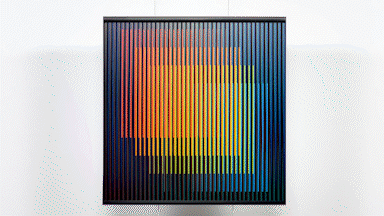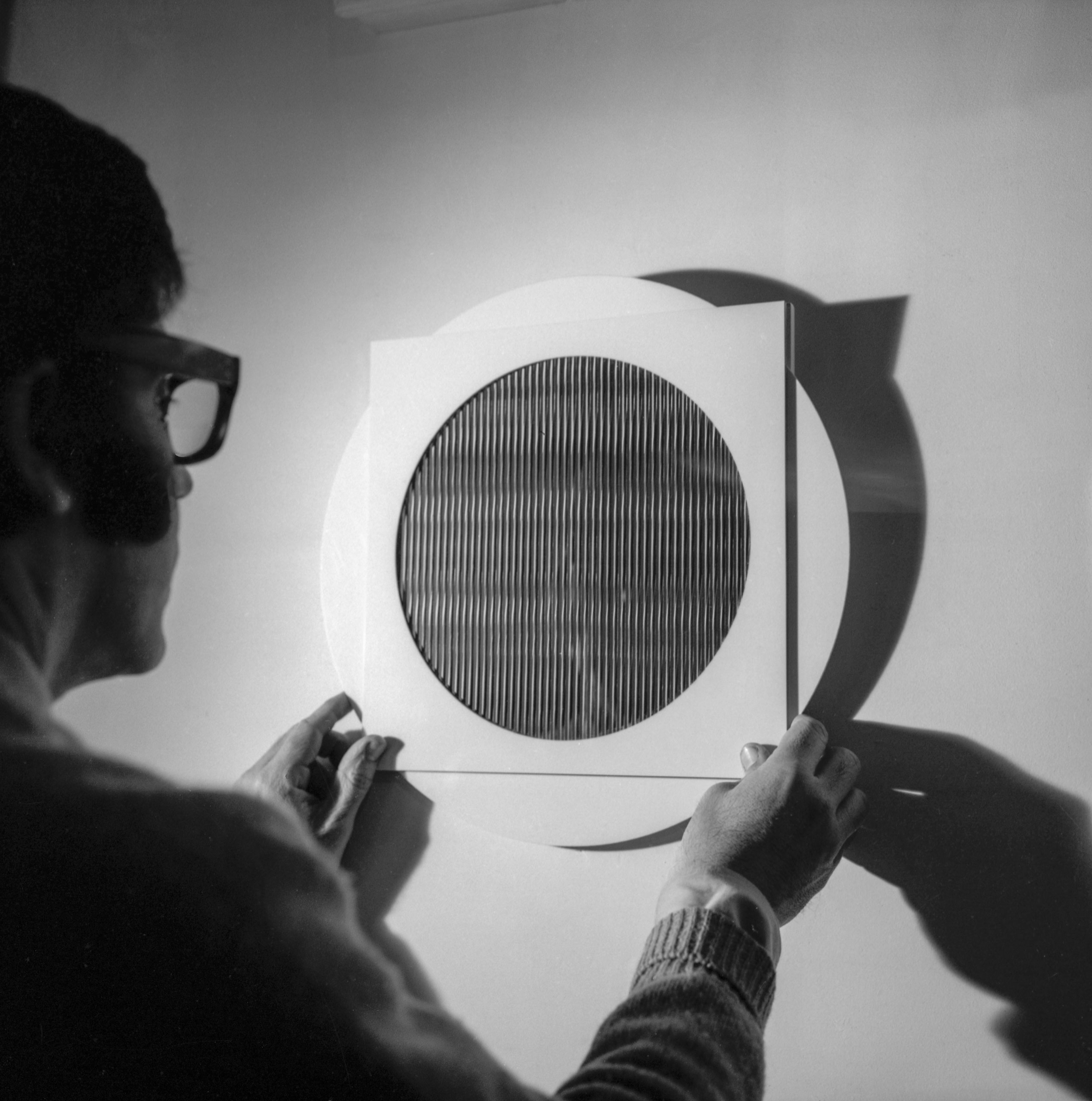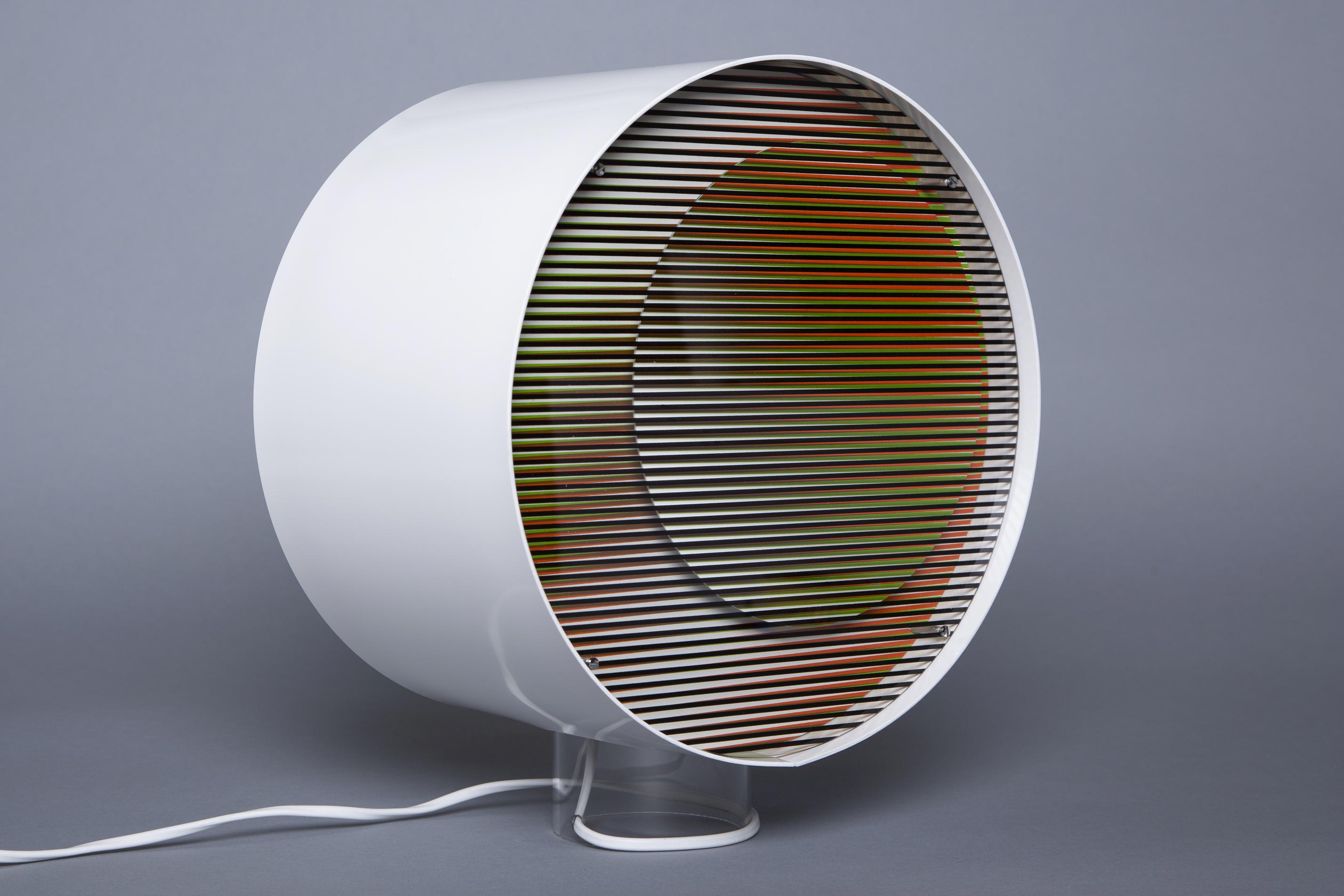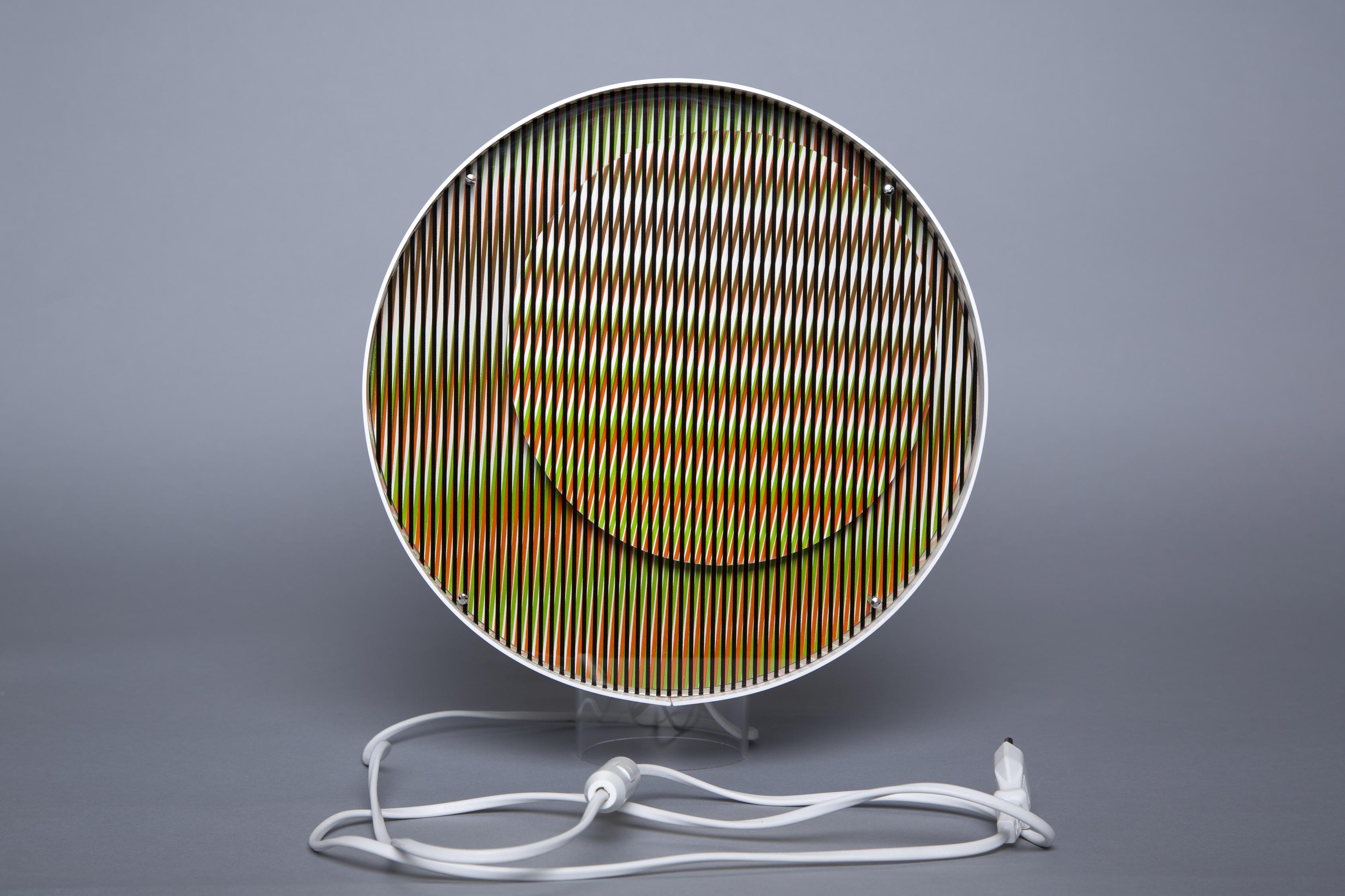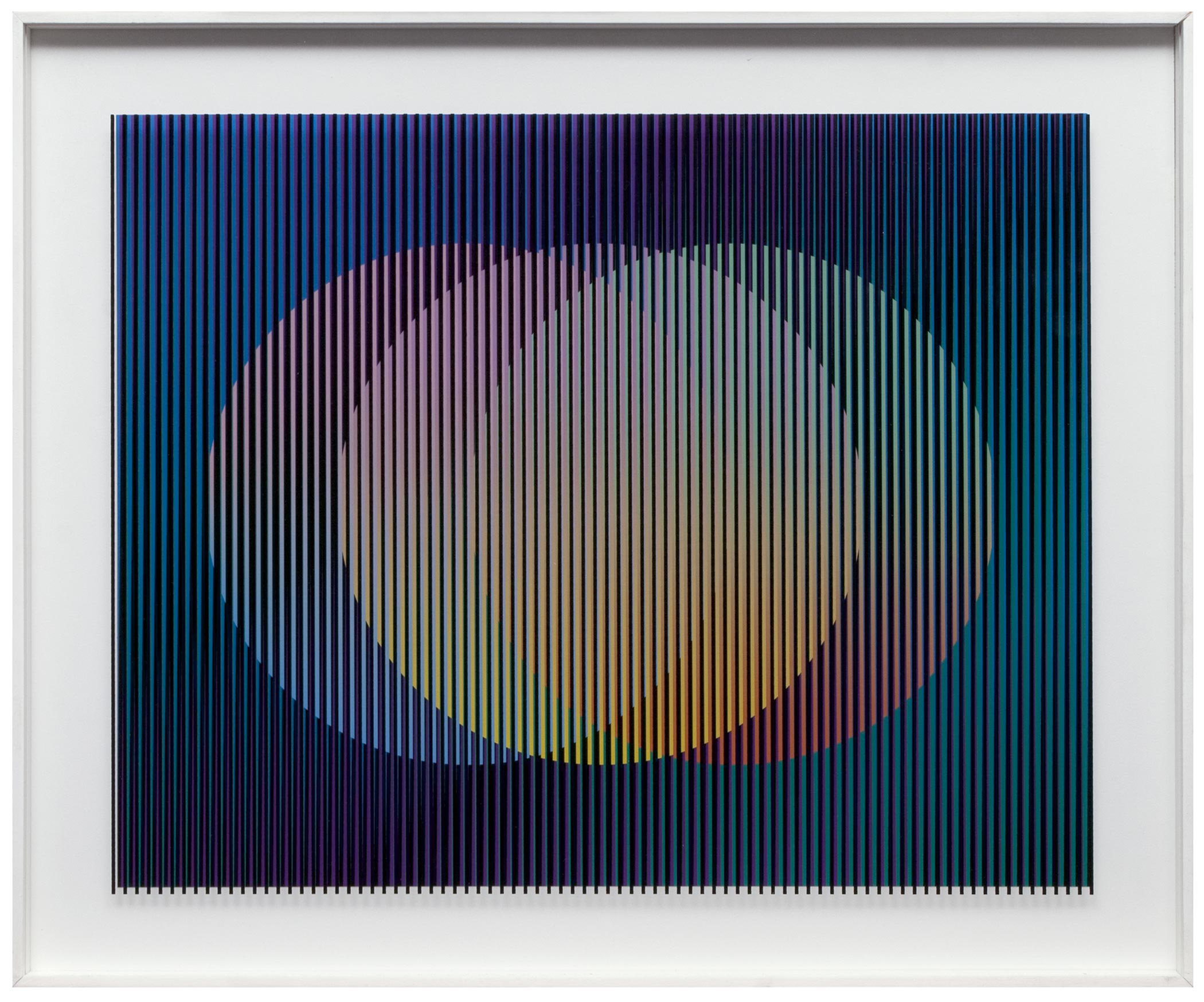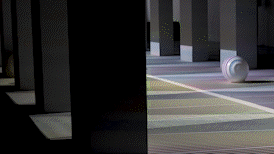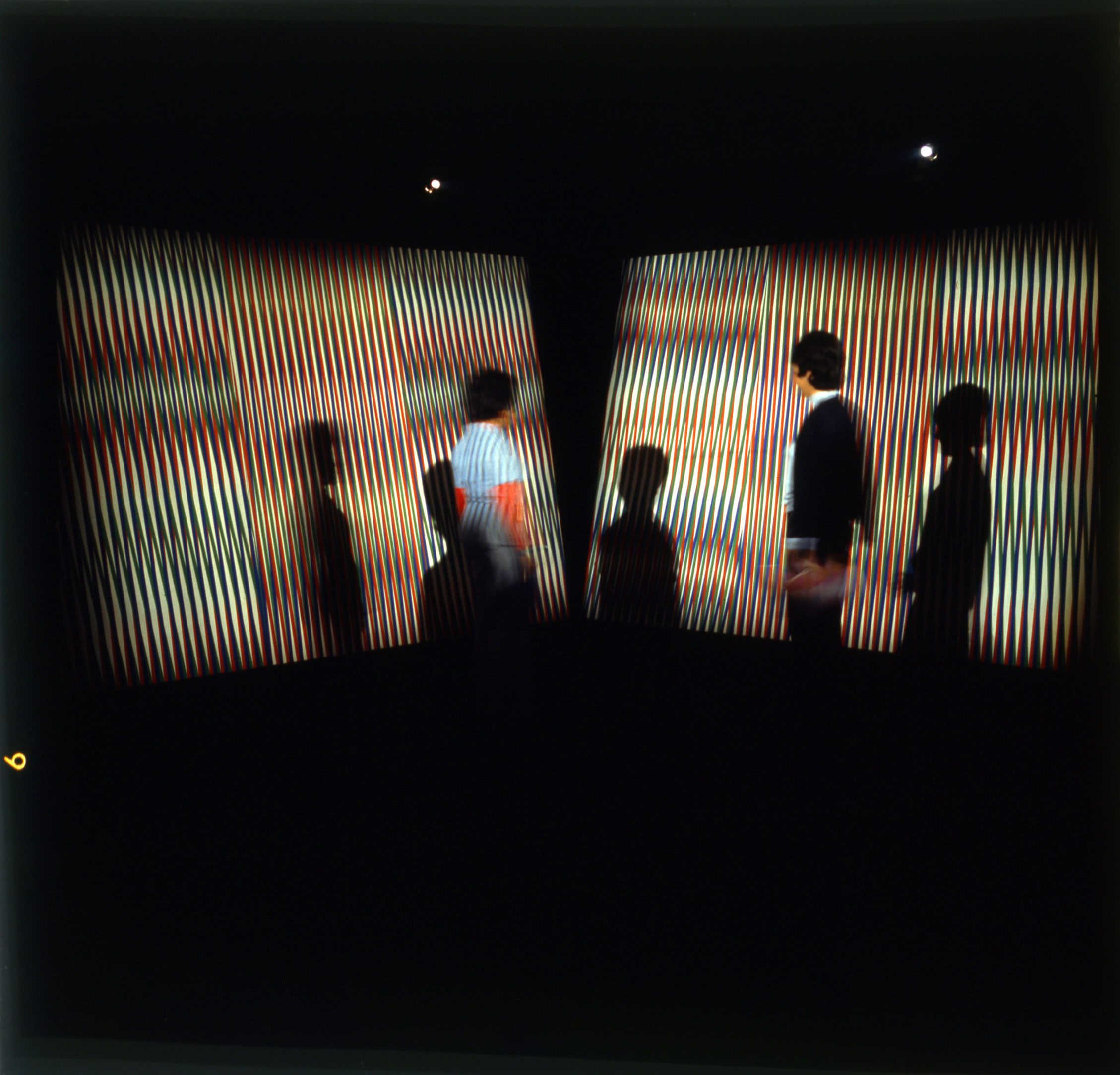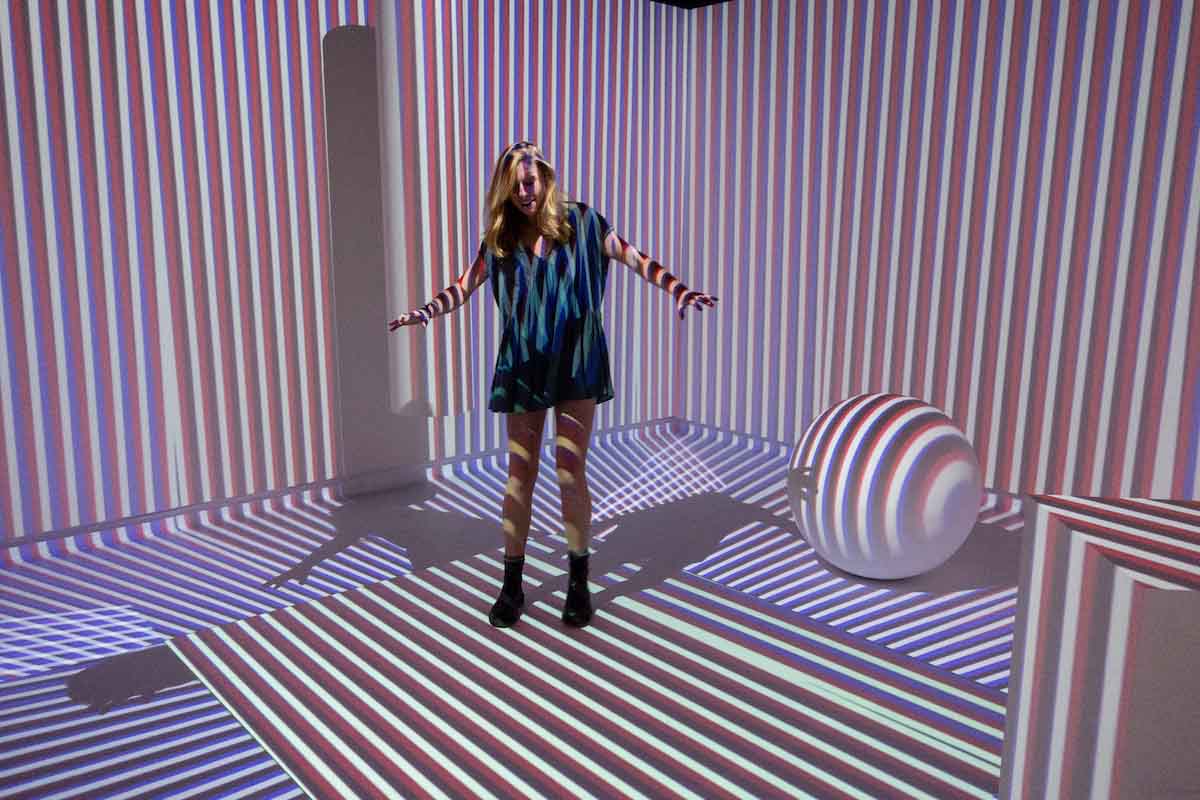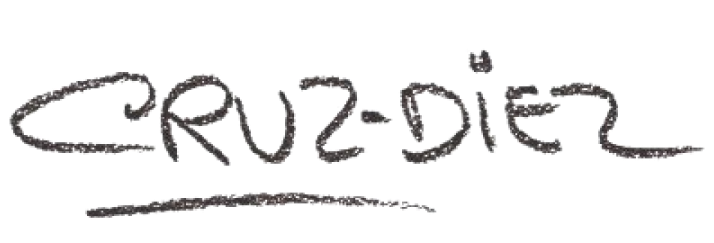
The Chromointerférence (1964) came when, as Carlos Cruz-Diez was silk screening some Couleur Additive patterns, he overlaid a transparent plastic sheet bearing the same arrangement of lines. As he moved the transparent image over the couleur additive modules, he noticed the appearance of color interferences that changed as the pattern on the overlay glided over the one below. Where the patterns intersected, the conflicted reading thereby produced created ranges of colors that had no chemical counterpart in the support. At the same time, the displacement of the patterns generated waves of movement that flowed in the opposite direction. He called them “false prisms” because they reconstituted the entire spectrum of light on an opaque material support.
Observed in this context, it should be noted that the chromatic variations in the Chromointerférence, depending on the nature of the support, can be additive or subtractive. They are additive when working with opaque supports (such as paper, cardboard, and so on), as in the case of Couleur Additive, which is inspired by the appearance of a virtual darker line where two color planes meet. They are subtractive in the Environnement Chromointerférent, in the Pyramide de Volume Chromointerférent, and in the Expérience Chromatique Aléatoire Interactive, which, having no physical support, owe their existence to subtractive color. This phenomenon is produced when rays of colored light — emitted by projectors or by pixels in a computer — intercept each other in space, causing them to change their hues.
Chromointerferent Environment, 1965-1974
The Chromointerferent Environments were imagined by Cruz-Diez in 1965, when he conceived the Labyrinthe de Déconditionnement, in order to create a situation in space, involving the dematerialization, transfiguration and ambiguity of color through movement. Projecting moving chromatic interference modules onto people and objects, they become transparent and virtually change form and condition. The constant shifting of the projection gives both visitors and objects a transparent appearance, while giving them a new role as "actors" of the experience and "authors" of the chromatic event that evolves in real time and space. By fixing our gaze on the shadows cast on the walls, we have the sensation of moving in the opposite direction of the lines of color. It is a dialogue established between the variable of the chromatic interferences and the constant of the shadows.
This is more than the demonstration of a purely physical phenomenon. Here, color is pure expression - an experimental state which directly touches one's sensibility. In fact, in nature, color does not exist in its pure state in isolation, but always by interaction.
Frank Popper – Catalogue, Venezuelan Pavillion XXXV Biennial in Venice, 1970
